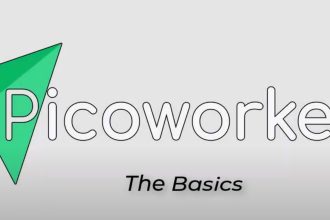FlexBanking is a financial tool that makes budgeting less of a task and more of a built-in habit. It turns everyday spending into actionable insight. Instead of requiring separate apps or manual tracking, it brings smart money management directly into the daily banking experience.
- Real-Time Control Over Your Money
- Flexible Credit That Moves With You
- Smarter Budgeting Built Into the Experience
- Mobile-First Tools That Stay In Sync
- No Hidden Fees and Clearer Terms
- Built-In Savings That Adjust Automatically
- Helping Younger Users Learn by Doing
- Aligning With Changing Income Patterns
- A Different Way to Think About Money
Users no longer need to wait until month-end to understand where their money went. With real-time categorization, savings prompts, and intuitive visual tools, budgeting becomes something that happens automatically without the friction or effort traditional tools often require.
Real-Time Control Over Your Money
One of the most noticeable changes FlexBanking brings is how it gives users access to their money in real time. That includes instant notifications after spending, immediate balance updates, and spending insights that update without delay.
Unlike traditional statements that summarize the past month, FlexBanking accounts are built to reflect the now. You can see exactly what’s available and where your money is going. This shift toward up-to-the-second awareness allows users to stay on top of finances without waiting for summaries or printed reports.
Flexible Credit That Moves With You
Instead of rigid credit cards or installment plans, FlexBanking introduces dynamic credit access through features like revolving limits, on-demand line of credit draws, and customizable repayment timelines.
Borrowing power adjusts to user behavior, not arbitrary models. People can pay more one week and less the next without penalty. As income shifts or needs change, so does repayment. That flexibility, coupled with transparent terms, gives users a sense of security without tying them down. It’s not just about access to funds. It’s about making credit feel like a tool, not a trap.
Smarter Budgeting Built Into the Experience
FlexBanking makes budgeting less of a task and more of a built-in habit by turning everyday spending into actionable insight.
Automatic Categorization on a Unified Platform
Budgeting once required spreadsheets or third-party apps. FlexBanking integrates it directly into the account experience. Spending is automatically categorized, and visual summaries make it easier to spot trends. For instance, someone might see they’ve spent 22% more on delivery meals this month and adjust accordingly.
Instead of needing to log in to multiple apps, users can view spending insights from the same dashboard they use to send money or pay bills.
Goal Setting Features
Savings goals are set up in seconds and tracked automatically. A user can create a short-term goal, like a weekend getaway, or something long-term, like building an emergency fund. The system nudges progress with gentle reminders and visual milestones that update as the user saves.
This seamless integration turns money management into a passive, ongoing experience rather than an occasional chore.
Mobile-First Tools That Stay In Sync
FlexBanking is designed for smartphones first, which means updates, alerts, and access are always within reach. Biometric logins, location-aware alerts, and card control settings let users lock or unlock features without speaking to an agent.
More than just convenience, it creates a sense of personal command over financial tools. If your debit card is lost, you freeze it with a tap. If spending in a specific category goes above your chosen limit, you get an alert. The system responds in real time, which creates a safety net without requiring extra work.
No Hidden Fees and Clearer Terms
A major shift in FlexBanking is the move away from confusing fine print. Most platforms under this model promote upfront transparency with flat-rate fees or no fees at all.
There’s no penalty for using your credit line for a short period, no charge for checking your balance, and no surprise service fees. Terms are simple and laid out in plain language.
This radical clarity builds trust and reduces the anxiety many users associate with financial services. It allows people to make choices with full knowledge of what those choices will cost, if anything.
Built-In Savings That Adjust Automatically
FlexBanking systems often come with tools that round up purchases or allocate a percentage of deposits to savings goals.
Instead of waiting to transfer leftovers at the end of the month, these features automate the process. Over time, users accumulate funds without making major lifestyle changes.
Some platforms also provide “smart saves,” where the system moves small amounts based on your weekly spending patterns and upcoming expenses. This means savings grow even in months when budgeting feels tight.
Helping Younger Users Learn by Doing
Younger generations benefit especially from FlexBanking because it offers real-time learning opportunities. When a transaction happens, feedback follows.
Spending triggers insights, habits are tracked passively, and progress toward financial goals is visible with each login. There’s no need to guess or read lengthy statements. The platform becomes a learning tool as much as a utility.
This kind of experience builds confidence, especially for users managing their first paycheck, saving for a trip, or juggling part-time gigs.
Aligning With Changing Income Patterns
As gig work, freelancing, and variable incomes become more common, traditional banking fails to keep up. FlexBanking is better aligned with these realities.
It accommodates deposits from multiple sources, supports flexible repayment cycles, and gives users tools to plan across irregular cash flows. Here are some of the key FlexBanking features for variable income users:
- Accepts multiple deposit types (e.g., gigs, payouts, transfers),
- Users can adjust repayment timelines without penalties,
- Offers dynamic budgeting alerts for inconsistent earnings,
- Provides snapshots of cash flow across different timeframes.
A user can receive funds from two part-time jobs, use the same account for spending and savings, and set controls that reflect their specific needs. There’s no need to conform to once-a-month income cycles or legacy structures.
A Different Way to Think About Money
FlexBanking isn’t a replacement for traditional financial institutions, but it’s challenging the norms. Its tools are built for people who want their accounts to reflect modern lives; mobile, fast, flexible, and clear.
The change isn’t coming. It’s already here, and the systems that adopt this model are the ones users are now choosing first.















